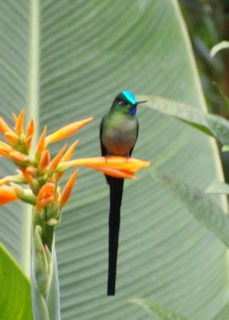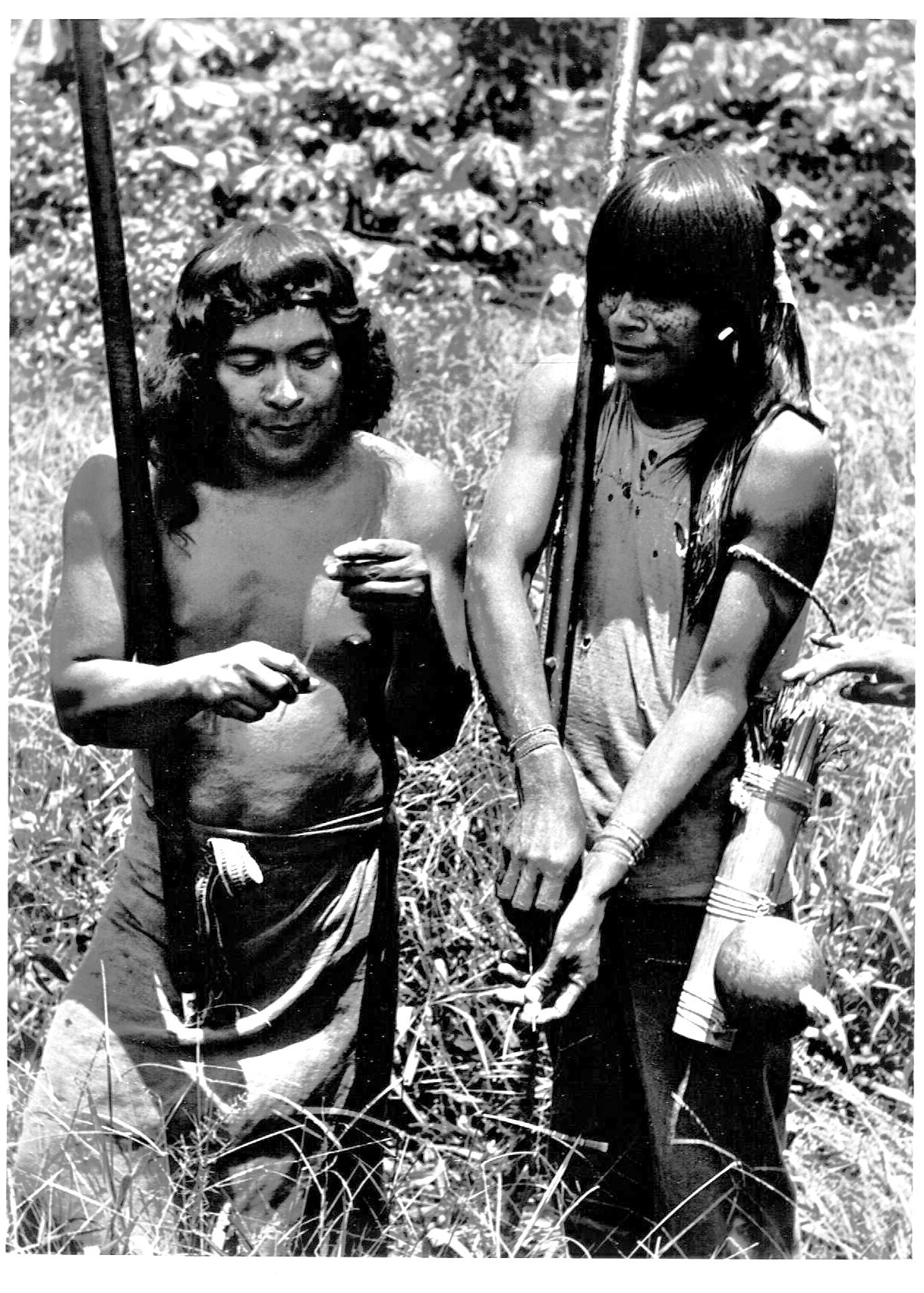
About two years ago, I wrote about the idyllic weeks and months I spent as a child in Ecuador's "el Oriente." El Oriente is Ecuador's magnificent jungle region on the East side of the majestic Andes Mountains. It is the beginning of the Amazon rain forest basin -- some parts still pristine -- and one of the most biologically diverse regions on earth, an ecological miracle.
In those days, while my sister and I chased the colorful, gigantic mariposas and admired the delicate, iridescent colibrís, we did not realize that Ecuador has thousands of species of butterflies and is home to one of the largest profusions of hummingbirds in the world.
In those days, we were unaware that there existed an even more pristine, more ecologically diverse region deeper into Ecuador's Amazon rain forest. It is the Yasuní National Park, a nearly 4,000-square-mile rainforest wilderness of incredible biodiversity and the ancestral land to two of the most isolated and "uncontacted" indigenous tribes, the Taromenane and Tagaeri -- a region so precious and so unique, that in 1989 Yasuní was designated a UNESCO "Man and the Biosphere Reserve."
In those days, the plunder and ravage of el Oriente by greedy, reckless oil companies had not yet begun.
I wrote about Yasuní in this way:
According to a 2010 research article in the Journal PLoS One, this "quadruple richness center" encompassing less than 0.5% of the Amazon Basin, has 150 amphibian species, "a world record," and 121 species of reptiles. An average upland hectare in Yasuní contains 655 species of trees (more than the United States and Canada combined) and 100,000 species of insects. One section of the park holds at least 200 species of mammals, 247 amphibian and reptile species, and 550 species of birds, making the park the most biodiverse and the richest biological incubator on earth.
Yasuní is also home to a considerable number of endemic and endangered species, including several species of mammals and rare birds -- and the home to thousands of yet-to-be-discovered species.
Others have described Yasuní as follows:
•"Yasuní National Park in Ecuador is reputed to be the biologically richest place on earth. Its 3791 square miles are believed to contain more species of plants and animals than any other comparable area."
•"Yasuní is terra incognita, one of the beastliest, 'lushest', most fecund, abundant but unknown places on Earth."
But I also wrote that, because the Park sits atop an estimated 850 million to 1.3 billion barrels of oil reserves -- Ecuador's second largest untapped oil reserves -- this fragile and irreplaceable habitat had become the next target for oil companies. Companies that each year wipe out approximately 600 square miles of Amazon rain forest for the sake of oil production. Oil that is Ecuador's principal export and major source of revenue, but also oil that has caused incalculable damage to Ecuador's rainforest and to the lives, livelihoods and traditions of the local natives.
Oil companies have come and gone but not before deliberately dumping "many billions of gallons of waste byproduct from oil drilling directly into the rivers and streams of the rain forest covering an area the size of Rhode Island. [The company] gouged more than 900 unlined waste pits out of the jungle floor -- pits which to this day leach toxic waste into soils and groundwater. It burned hundreds of millions of cubic feet of gas and waste oil into the atmosphere, poisoning the air and creating 'black rain' which inundated the area during tropical thunderstorms," as described in a brief filed against an American oil company in a massive multi-billion dollar law suit on behalf of 30,000 rainforest inhabitants -- "los afectados," the affected ones.
Bob Herbert, in a damning New York Times opinion piece three years ago, described that company as follows:
Texaco came barreling into this delicate ancient landscape in the early 1960s with all the subtlety and grace of an invading army. And when it left in 1992, it left behind, according to the lawsuit, widespread toxic contamination that devastated the livelihoods and traditions of the local people, and took a severe toll on their physical well-being.
In "Reversal of Fortune," a thorough, compelling and, above all, objective chronology of the lawsuit that is now in its 20th year and is going nowhere fast, Patrick Radden Keefe writes:
During the decades when Texaco operated [in the Oriente], the lawsuit maintained, it dumped eighteen billion gallons of toxic waste. When the company ceased operations in Ecuador, in 1992, it allegedly left behind hundreds of open pits full of malignant black sludge. The harm done by Texaco, the plaintiffs contended, could be measured in cancer deaths, miscarriages, birth defects, dead livestock, sick fish, and the near-extinction of several tribes; Texaco's legacy in the region amounted to a "rain-forest Chernobyl."
The lawsuit is going nowhere fast, partially thanks to Chevron's deep pockets (Chevron acquired Texaco in 2001) and also, as Keefe quotes one of Chevron's spokesmen saying, "We're going to fight this until Hell freezes over -- and then we'll fight it out on the ice."
Also going nowhere almost as fast -- at least up to now -- is a plan, the Yasuní-Ishpingo Tambococha Tiputini (ITT) Initiative (named after the three oil fields at Yasuní), about which I said two years ago, "finally, some sanity appears to be surfacing."
I was referring to Ecuador's unprecedented and innovative plan -- some call it crazy, unworkable, even blackmail ("greenmail") and extortion -- to leave the oil in the ground at Yasuní (estimated to be worth $7.2 billion) if the international community pledges to pay for half of the oil's value, $3.6 billion. The money would be used for the country's sustainable social and economic development, for renewable energy, conservation and reforestation projects.
Today, six years after Ecuador's President Rafael Correa first presented this historic initiative to the world community and nearly three years after Ecuador and the United Nations Development Program (UNDP) signed a trust agreement for managing financial contributions from donors, the amount raised by, or committed to, the Yasuní-ITT Initiative is a mere $330 million, or about 9 percent of the total amount needed to fully fund the Initiative. Only $64 million has been formally deposited.
Conspicuously absent from donor or pledge countries is the United States, albeit some private US companies and foundations have contributed or pledged.
President Correa has given the world community 13 years to come up with the requested funding.
In a powerful, eye-opening documentary on NBC's "Rock Center" on May 3, we learned that the government of Ecuador has launched a "new boom in oil drilling" by inviting bids for drilling on up to eight million pristine rainforest acres including on indigenous tribal lands surrounding the Yasuní-ITT-Initiative-"protected" lands and regardless of the rights of and protests by the indigenous tribes.
The NBC documentary shows some of the rainforest damage still visible and still affecting the inhabitants as a result of the billions of gallons of oil and toxic waste left behind by oil companies between 1964 and 1990. "In fact, more oil has been spilled [in Ecuador's rain forest] than in Alaska's Exxon Valdez disaster," says Ann Curry.
Watch the documentary here and below.
Visit NBCNews.com for breaking news, world news, and news about the economy
The tribesmen in Ecuador's Oriente are preparing to challenge the Ecuadorean government's plan to auction their land for oil drilling, even if it means fighting to the death to protect their land and their rights.
Brave and proud as these people are, armed with blowpipes and other primitive weapons, they are no match for a government starving for cash or for Big Oil chomping at the bit to exploit the crude oil.

Photo by the author's late Father who wrote on the back of it: "Chief Taisha, of the Jivaro head hunters and his son, Segundo, with their 16-foot blowpipes, September 1948."
If the Ecuadorean government continues to heedlessly auction pristine Oriente lands and if the funding for the Yasuní-ITT Initiative fails to materialize, it will be a tragedy of immense proportions for the "biologically richest place on earth" and it will make our entire planet "el afectado."
Lead image -- Ecuadorean hummingbird : Courtesy Dr. Claudia Krasnoff
